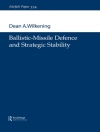America’s war on terror is widely defined by the Afghanistan and Iraq fronts. Yet, as this book demonstrates, both the international campaign and the new ways of fighting that grew out of it played out across multiple fronts beyond the Middle East. Maria Ryan explores how secondary fronts in the Philippines, sub-Saharan Africa, Georgia, and the Caspian Sea Basin became key test sites for developing what the Department of Defense called ‘full spectrum dominance’: mastery across the entire range of possible conflict, from conventional through irregular warfare.
Full Spectrum Dominance is the first sustained historical examination of the secondary fronts in the war on terror. It explores whether irregular warfare has been effective in creating global stability or if new terrorist groups have emerged in response to the intervention. As the U.S. military, Department of Defense, White House, and State Department have increasingly turned to irregular capabilities and objectives, understanding the underlying causes as well as the effects of the quest for full spectrum dominance become ever more important. The development of irregular strategies has left a deeply ambiguous and concerning global legacy.
Tabella dei contenuti
Introduction: 0
1. 9/11 and the Early Seeds of Irregular Warfare
2. The Philippines and the War on Terror in Southeast Asia
3. The War on Terror in Sub-Saharan Africa
4. Terrorism and the ‘Great Game’ in Georgia and the Caspian Basin
5. Irregular Warfare at the Pentagon, 2004–2008
6. State, USAID, and Interagency Mobilization
7. Irregular Warfare with Restraint: The Obama Years
Conclusion: 8
Circa l’autore
Maria Ryan is Assistant Professor in American History at the University of Nottingham. She is the author of
Neoconservatism and the New American Century (2010).












